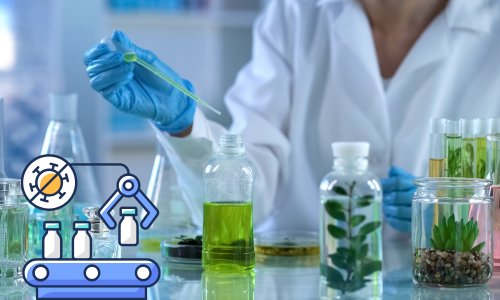Green Chemistry in Pharma: Toward Sustainable Drug Manufacturing
Explore how green chemistry is revolutionizing pharmaceutical manufacturing with sustainable practices, eco-friendly processes, and innovative technologies driving a cleaner future in drug production.

The pharmaceutical industry, long recognized for its role in advancing global health, is now facing a growing responsibility to align its practices with environmental sustainability. At the forefront of this shift is green chemistry-a scientific approach focused on designing products and processes that minimize the use and generation of hazardous substances. In the context of drug manufacturing, green chemistry is rapidly becoming a guiding principle for reducing environmental impact while maintaining the quality and effectiveness of medications.
Traditionally, drug synthesis has involved complex chemical reactions that generate large volumes of waste, consume significant energy, and rely heavily on toxic solvents and reagents. These processes, while effective in producing life-saving medicines, often come at a substantial environmental cost. Green chemistry seeks to change that by promoting cleaner, safer, and more efficient methods from the earliest stages of drug design to final production.
One of the key strategies in green pharmaceutical manufacturing is process optimization—rethinking how a drug is made to reduce the number of steps involved, improve yield, and minimize resource consumption. This often involves adopting alternative reaction pathways that use less harmful substances or create fewer byproducts. In many cases, such improvements lead to both environmental and economic benefits.
Green chemistry encourages the use of water, supercritical fluids, or bio-based solvents as safer alternatives. Similarly, catalysts are being developed that allow for reactions under milder conditions, cutting down on energy requirements and reducing emissions.
Biocatalysis, the use of enzymes or microorganisms to drive chemical reactions, is another area gaining momentum. These biological systems operate under environmentally friendly conditions and often produce purer products, reducing the need for extensive purification steps that generate additional waste.
Instead of focusing solely on end-of-pipe treatment, green chemistry emphasizes preventing waste at the source. This includes designing molecules that degrade more easily in the environment and incorporating recycling and reuse strategies for solvents and materials within the production process.
The transition to sustainable drug manufacturing also involves rethinking packaging and distribution. Eco-friendly packaging materials, optimized supply chains, and energy-efficient transport methods are being explored to reduce the carbon footprint associated with getting medicines from the factory to the pharmacy.
However, the path toward greener practices is not without challenges. Implementing new technologies can require significant investment, and regulatory frameworks must evolve to support environmentally conscious innovations. Additionally, there is a need for greater collaboration across the industry to share knowledge, tools, and best practices that support sustainable progress.
Despite these hurdles, the momentum is clear. As awareness grows about the environmental consequences of traditional manufacturing, the pharmaceutical industry is increasingly recognizing that green chemistry is not just an option—it is a necessity. By embracing sustainability, the sector can continue to fulfill its mission of improving human health while also protecting the health of the planet.
Meta Keywords:
Green chemistry, sustainable drug manufacturing, pharma sustainability, eco-friendly pharmaceuticals, green pharma technologies, chemical manufacturing, sustainable pharma practices, eco-conscious drug development, pharmaceutical green initiatives
What's Your Reaction?


















